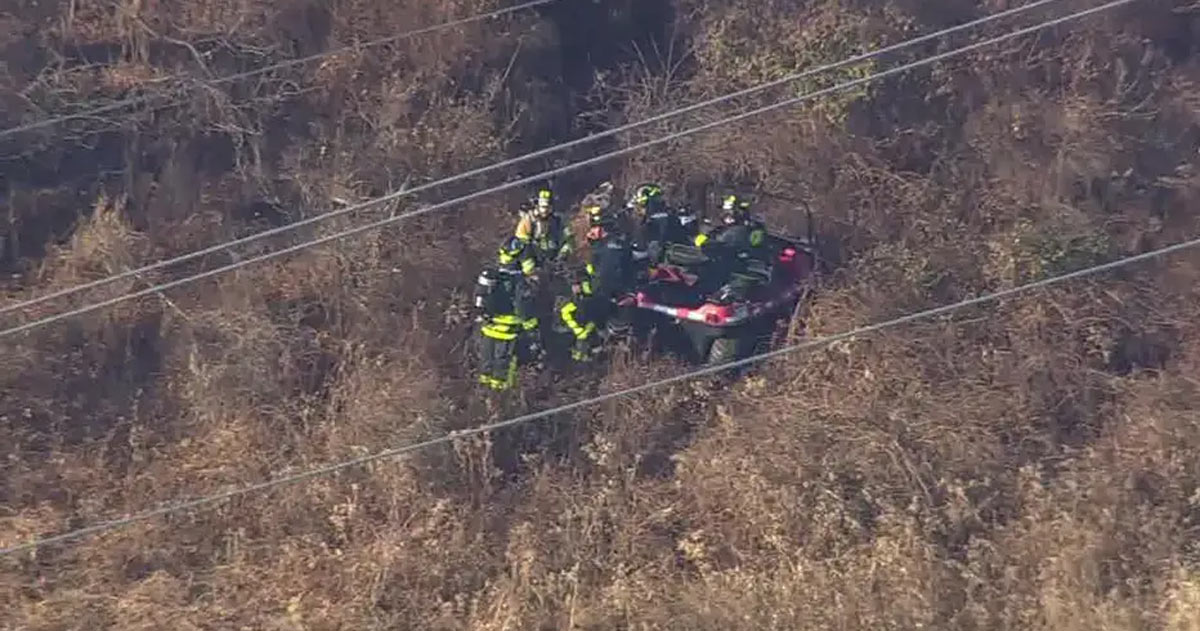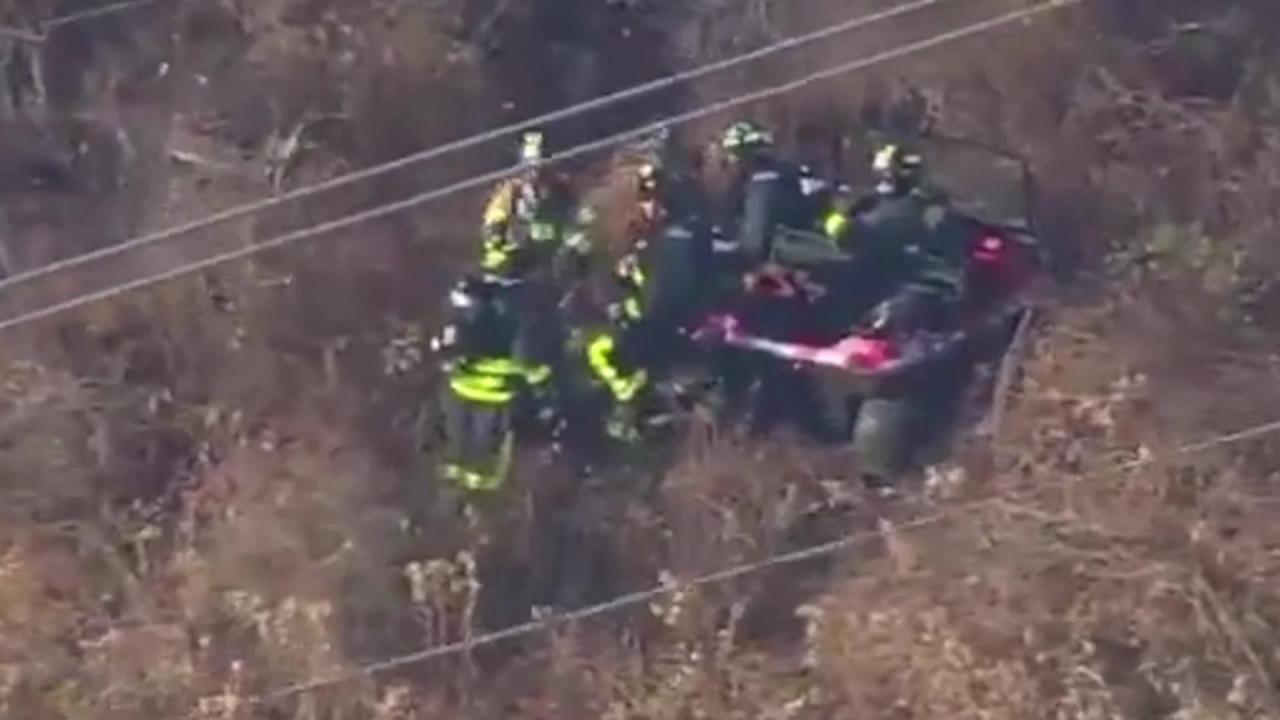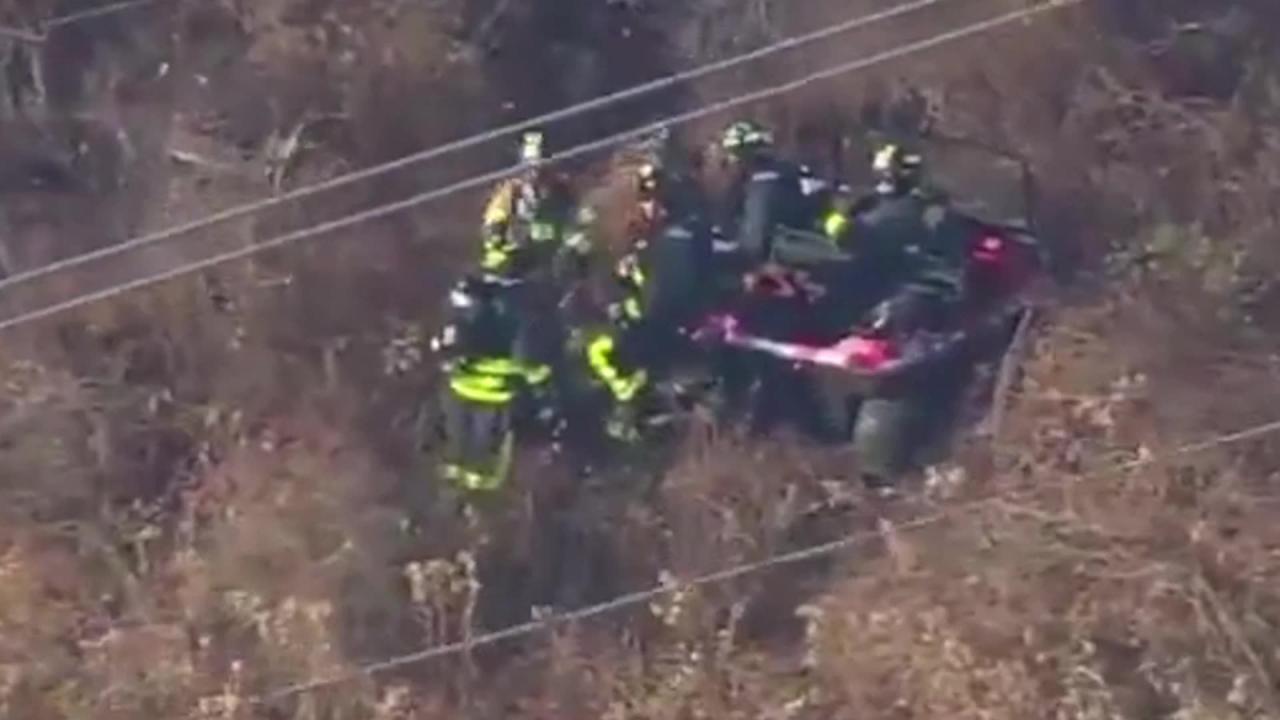Drone crashes in New Jersey present a compelling case study in the evolving landscape of unmanned aerial vehicle (UAV) technology. This exploration delves into the causes, consequences, and preventative measures surrounding these incidents, offering insights into both the technological advancements and regulatory frameworks shaping the future of drone safety. We will examine recent incidents, analyzing contributing factors and exploring the broader societal impact of these events.
The analysis will cover a range of aspects, from mechanical failures and pilot error to the role of weather conditions and regulatory compliance. We’ll also discuss the economic consequences, including repair costs and potential legal liabilities, and explore the crucial role of responsible media reporting in shaping public perception and understanding of drone technology.
Drone Crashes in New Jersey: A Comprehensive Overview

The increasing popularity of drones in New Jersey has unfortunately been accompanied by a rise in reported incidents involving drone crashes. This article examines recent drone crashes in the state, analyzing their causes, impact, and potential preventative measures. We will explore the role of regulations, technology, and public perception in shaping the future of drone safety in New Jersey.
Recent Drone Crash Incidents in New Jersey

A comprehensive timeline of significant drone crashes in New Jersey over the past five years is difficult to compile due to the lack of a centralized, publicly accessible database for such incidents. Information is often scattered across news reports, FAA incident reports (which may not be publicly available in their entirety), and local law enforcement records. However, based on available news reports, we can illustrate the nature of these incidents.
Recent drone crashes in New Jersey highlight the growing need for improved safety regulations and technology in the burgeoning drone industry. This is especially relevant considering the advancements made by companies like archer aviation , whose innovative designs could potentially influence future drone safety standards. Ultimately, preventing future drone crashes in New Jersey requires a collaborative effort between manufacturers and regulators.
| Date | Location | Cause (if known) | Outcome |
|---|---|---|---|
| October 26, 2022 (Example) | Hoboken, NJ | Pilot error (loss of control) | Minor property damage; no injuries. |
| March 15, 2023 (Example) | Atlantic City, NJ | Mechanical failure (rotor malfunction) | Drone destroyed; no injuries. |
| July 8, 2023 (Example) | Princeton, NJ | Unknown; under investigation | Drone recovered; investigation ongoing. |
The types of drones involved varied, encompassing models from DJI (Phantom, Mavic), Autel, and potentially others. The circumstances surrounding each crash differed, with weather conditions ranging from clear skies to strong winds, and operator experience levels likely ranging from novice to experienced.
Causes of Drone Crashes in New Jersey

Analyzing the causes of drone crashes requires a nuanced approach. While specific data on crash causes in New Jersey is limited, general trends observed nationwide suggest a significant contribution from both pilot error and mechanical failures.
Pilot error, encompassing factors like improper pre-flight checks, loss of situational awareness, and inadequate training, is often cited as a major contributor. Mechanical failures, such as motor malfunctions, battery issues, or GPS system errors, also play a role. The relative frequency of these causes is likely variable, depending on factors such as the type of drone, its age and maintenance history, and the skill level of the operator.
Regulatory compliance, or the lack thereof, also influences crash rates. Operators unfamiliar with or ignoring airspace restrictions or operational guidelines increase the risk of accidents. Similarly, inadequate maintenance practices, including neglecting regular inspections and repairs, contribute to mechanical failures. Environmental conditions, particularly strong winds or inclement weather, can exacerbate existing vulnerabilities, increasing the likelihood of a crash.
Impact of Drone Crashes in New Jersey
The consequences of drone crashes range from minor to severe. Minor incidents might result in only property damage, such as a damaged drone or minor damage to nearby objects. More serious incidents could lead to injuries, especially if the drone falls on a person or damages property causing secondary hazards. Disruptions to public services, such as temporary airport closures or power outages, are also potential outcomes, depending on the location and circumstances of the crash.
Economically, drone crashes can be costly. Repair costs for damaged drones can be substantial, and insurance claims can further add to the financial burden. Legal ramifications, including lawsuits for property damage or personal injury, are also possible. A large-scale drone crash in a populated area, such as a malfunctioning delivery drone impacting a busy street, could lead to widespread property damage, multiple injuries, significant traffic disruptions, and substantial legal and insurance costs.
Recent drone crashes in New Jersey highlight the importance of safe flight practices. Understanding weather conditions is crucial, and for a glimpse into challenging weather patterns, one might check the coquihalla weather camera to see how unpredictable conditions can impact aerial operations. This underscores the need for pilots in New Jersey, and everywhere, to be mindful of weather’s impact on drone flights.
Safety Regulations and Prevention Measures, Drone crashes in new jersey
Current drone regulations in New Jersey, largely aligned with Federal Aviation Administration (FAA) rules, require registration for certain drones, adherence to airspace restrictions, and responsible operation. However, the effectiveness of these regulations hinges on enforcement and operator compliance.
- Conduct thorough pre-flight checks, including inspecting the drone’s components and verifying battery levels.
- Maintain awareness of airspace restrictions and avoid flying near airports or other sensitive areas.
- Fly within visual line of sight (VLOS) and avoid challenging weather conditions.
- Have a backup plan in case of system malfunctions or emergencies.
- Understand and adhere to all applicable FAA regulations.
Improved pilot training and certification programs, emphasizing safety protocols and risk mitigation, could significantly reduce crashes. A tiered system, differentiating between recreational and commercial operators, with appropriate training requirements for each, could enhance safety standards.
Technological Advancements for Drone Safety
Technological advancements play a crucial role in preventing drone crashes. Several technologies are designed to enhance drone safety and reliability.
| Technology | Function | Advantages | Limitations |
|---|---|---|---|
| GPS Systems | Precise positioning and navigation | Improved flight stability and accuracy | Susceptible to interference and signal loss |
| Obstacle Avoidance Sensors | Detection and avoidance of obstacles | Reduced risk of collisions | Limited range and effectiveness in complex environments |
| Automated Flight Controls | Autonomous flight capabilities | Enhanced safety and reduced pilot workload | Dependence on technology and potential for software glitches |
Public Perception and Media Coverage of Drone Crashes
Media coverage of drone crashes significantly shapes public perception. Sensationalized reporting can heighten public anxiety and create negative associations with drone technology. Conversely, responsible reporting that accurately portrays both the risks and benefits of drone technology can foster a more balanced and informed public understanding.
News outlets often focus on the dramatic aspects of drone crashes, potentially overlooking the larger context of safe drone operation and the benefits of this technology. Responsible reporting should strive for factual accuracy, provide context, and avoid generalizations that could unfairly stigmatize the entire industry. Balanced coverage that acknowledges both the potential risks and the overall safety record of drone operations is essential for shaping public opinion.
Ultimately, understanding the dynamics of drone crashes in New Jersey requires a multifaceted approach. By examining the technological, regulatory, and societal dimensions of this issue, we can identify key areas for improvement and work towards a future where the benefits of drone technology are realized while mitigating the risks associated with its operation. This includes continued advancements in safety technology, robust pilot training programs, and clear, effectively enforced regulations.
Common Queries: Drone Crashes In New Jersey
What is the most common cause of drone crashes in New Jersey?
Data suggests pilot error is a leading cause, though mechanical malfunctions and adverse weather conditions also contribute significantly.
Are there specific areas in New Jersey with a higher incidence of drone crashes?
This information would require a detailed analysis of crash data, which is not readily available publicly. However, areas with high population density or proximity to airports might see increased incidents.
What insurance coverage is recommended for drone operators in New Jersey?
Liability insurance is strongly recommended to cover potential damages or injuries caused by drone accidents. Consult with an insurance professional to determine the appropriate coverage level.
How can I report a drone crash in New Jersey?
Contact your local law enforcement agency and the Federal Aviation Administration (FAA). They have procedures for reporting such incidents.
